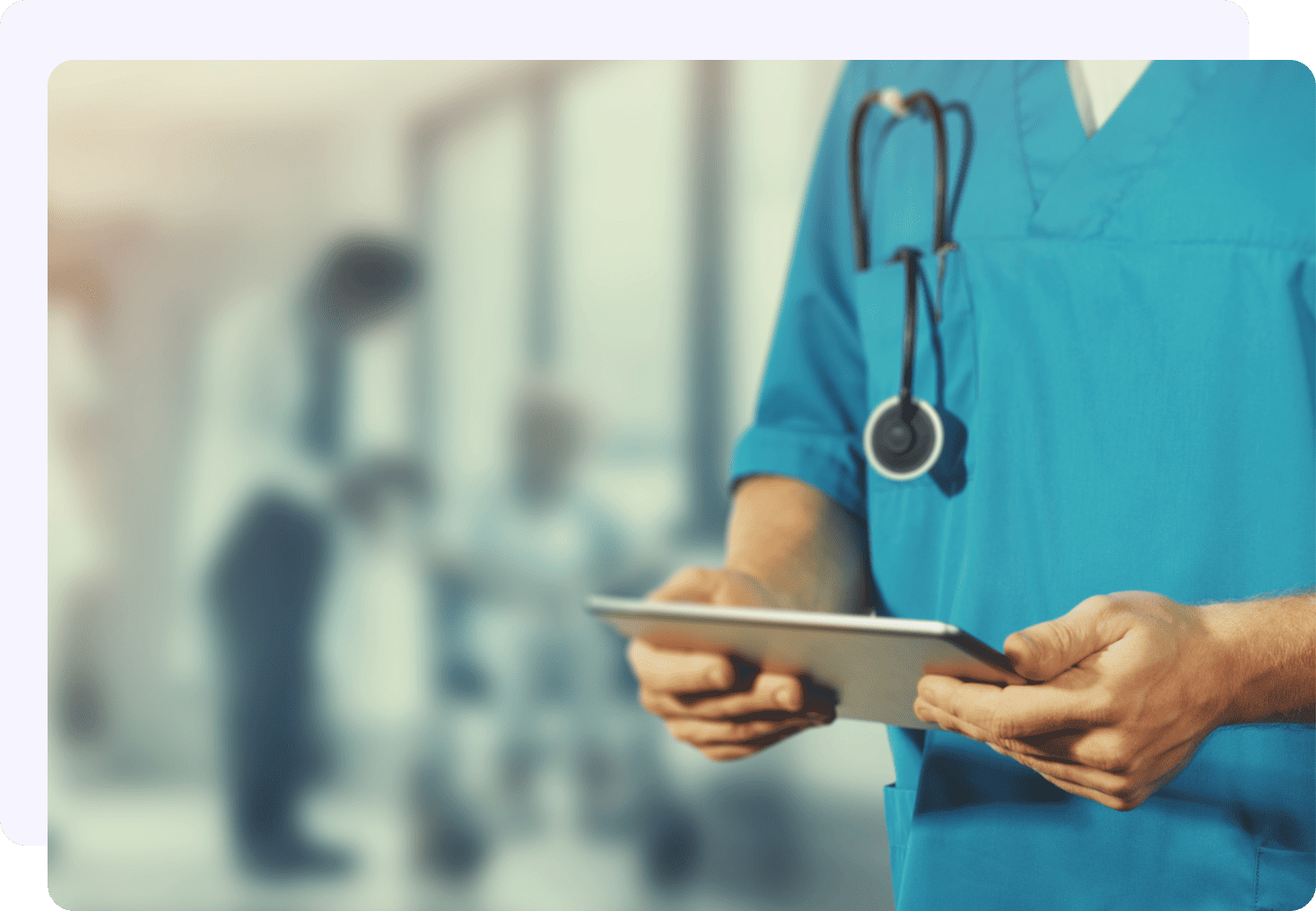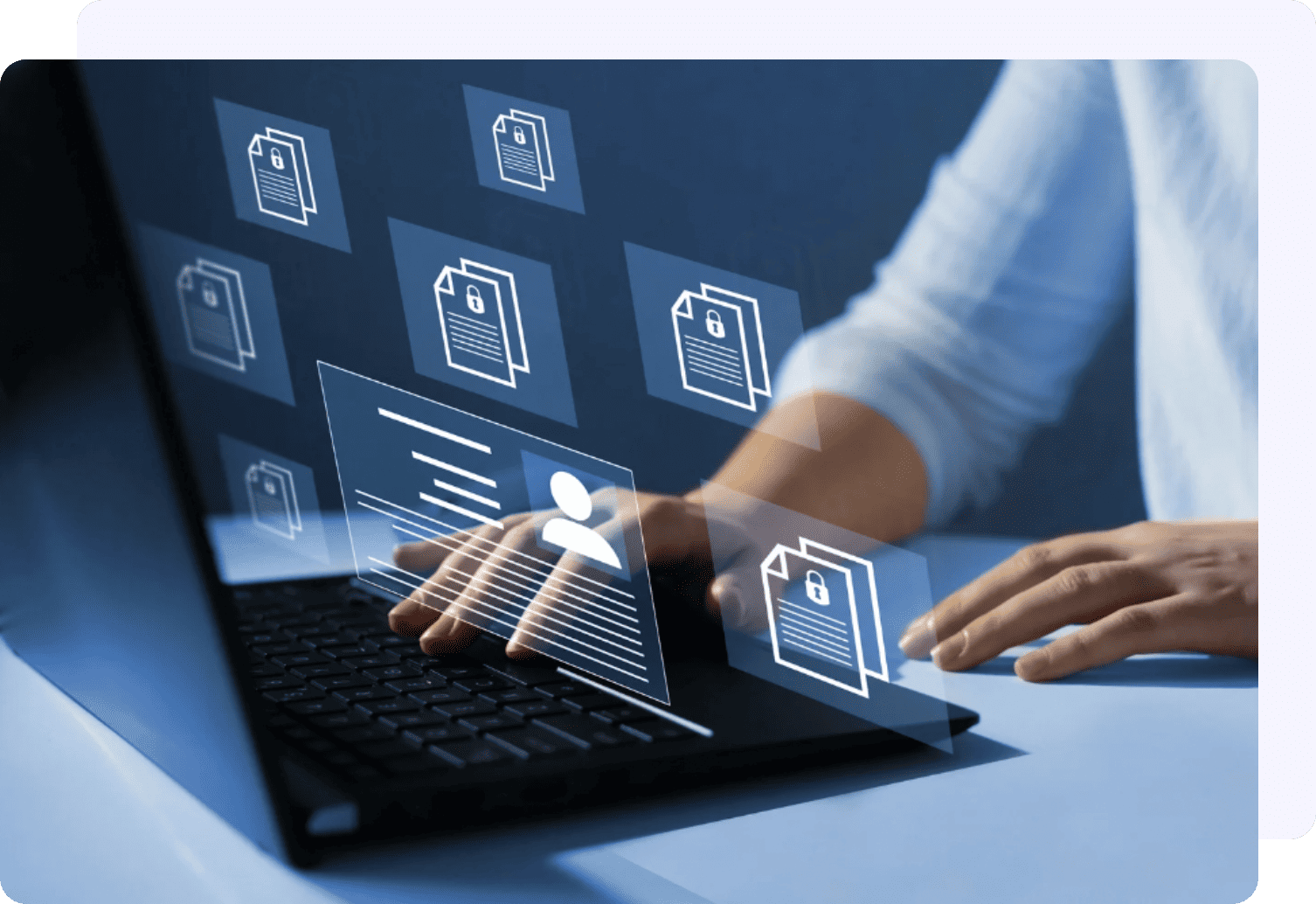
Non-communicable
Diseases SaaS
Noncommunicable diseases (NCDs), also known as chronic diseases, pose a significant global health challenge, claiming the lives of 41 million people each year, which accounts for 74% of all deaths worldwide. Among NCDs, cardiovascular diseases are the most deadly, followed by cancers, chronic respiratory diseases and diabetes.
Detecting, screening, and treating NCDs, along with providing palliative care, are crucial components of the response to this global health crisis.
Detect and manage non-communicable diseases in diverse communities with our NCDSaaS screening solution. By leveraging the latest technology, our platform offers comprehensive screening, early detection, and Personalised preventive strategies. We Prioritise early intervention to enhance patient health and well-being.
Key Features

Camp management
Manage health camps and streamline logistics, scheduling and coordinating services during these camps.

Automated NCDs Screening
Implement automated screening processes for Non-Communicable Diseases (NCDs) and Utilise technology to enhance the accuracy of health screenings.

Personalised Risk Assessments
Provide individuals with Personalised assessments of their health risks based on factors such as medical history, lifestyle, and genetic predispositions.

Teleconsultation
Facilitate remote medical consultations through secure and user-friendly telecommunication channels.

Health Data Analytics
Advanced analytics tools to Analyse and interpret health data.

Preventive Health Education
Promote awareness and understanding of preventive health measures with educational content for individuals to make informed decisions.

Seamless Integration with HIMS
Integration with the HIMS, data exchange and interoperability between healthcare systems.
Genetic Disease
Screening Solution
Our Genetic Disease Screening Solution offers a comprehensive and Personalised way to understand and manage genetic health. In the pursuit of proactive healthcare, genetic disease screening has emerged as a powerful tool, providing individuals and healthcare professionals with invaluable insights into potential health risks, thereby reducing the burden of the disease.

Key Features

Workflow management
Streamline healthcare processes between different stages of patient care.

Beneficiary screening
Identify beneficiaries for specific healthcare programs or interventions and streamline the screening process for targeted focus groups.

Accurate Preliminary and Gold-standard testing
Conduct precise preliminary and gold-standard testing methods for definitive diagnostic results.

Online and Offline Capabilities with Mobile/Tablet Application
Offer both online and offline capabilities through a mobile/tablet application, ensuring accessibility and continuity of services even in areas with limited internet connectivity.

Logistics (System Traceability Management)
Manage system traceability efficiently, ensuring the seamless coordination and tracking of samples, equipment, and personnel across healthcare operations for optimal logistics management.

Integration with systems and devices
Integrate with various hardware systems and medical devices to enhance data collection and monitoring.

Powerful algorithms for Risk Stratification
Implement algorithms to stratify patients based on their health risks and provide interventions.

Familial Risk Assessment
Evaluate the risk of hereditary health conditions with early detection and preventive measures for individuals with familial health risks.

Comprehensive genetic counselling
Offer thorough genetic counselling services to individuals and families.

Secure Data Management
Robust security measures to ensure the confidentiality and integrity of patient data and adherence to data privacy regulations and standards.

Analytics and Reporting
Analytics tools to derive meaningful insights from healthcare data and comprehensive reports for informed decision-making.

Robust Communication Channels
Reliable and secure communication channels for healthcare professionals and patients.

Integrated Health Information System
Experience a holistic approach to hospital management with our Hospital Information Management System. Designed for healthcare providers, HIMS ensures a seamless flow of information across departments, enhancing patient care, and improving administrative efficiency. From electronic health records to resource management, our HIMS caters to the diverse needs of modern healthcare.
Key Features

Electronic Health Records (EHR)
Digitally manage and store comprehensive patient health records and ensure data security and privacy compliance with robust access controls and encryption protocols.

Appointment Scheduling
Enable efficient scheduling of patient appointments with real-time availability of healthcare providers and facilities and facilitate automated reminders to patients for upcoming appointments, reducing no-show rates.

Billing and Invoicing
Streamline the billing process for healthcare services rendered to patients, insurance companies, or third-party payers. Track payments, manage accounts receivable, and reconcile financial transactions seamlessly.

Inventory and Resource Management
Efficiently manage healthcare resources, including medical supplies, pharmaceuticals, equipment, and facilities. Monitor inventory levels in real-time, automate reordering processes to prevent stockouts or overstocking. Track expiration dates, lot numbers, and supplier information for better inventory control and regulatory compliance.

Multi-Department Collaboration
Facilitate seamless communication and collaboration among different departments within the healthcare facility, such as medical, nursing, administrative, and support staff. Enable secure sharing of patient information, test results, and treatment plans across departments to ensure coordinated care delivery.

Clinical Decision Support
Integrate decision support tools such as drug interaction checks, allergy alerts, and clinical pathways to enhance patient safety and quality of care.

Reporting and Analytics
Generate comprehensive reports and analytics on key performance indicators (KPIs), such as patient volumes, resource utilization, revenue generation, and clinical outcomes.

Telemedicine Integration
Seamlessly integrate telemedicine capabilities for remote consultations, virtual visits, and telemonitoring of patients.

Interoperability and Integration
Ensure interoperability with external systems, such as laboratory information management systems (LIMS), picture archiving and communication systems (PACS), and electronic prescribing platforms.

Mobile Access and Patient Portals
Provide secure mobile access to HIMS functionalities for clinicians, staff, and patients through dedicated mobile applications.

Laboratory Management
Manage laboratory tests, including test orders, specimen collection, processing, and result reporting. Integrate with laboratory instruments and systems for automated data capture and result interpretation.

Pharmacy Management
Maintain medication inventory, dispensing, and administration records. Support electronic prescribing (e-prescribing) and medication reconciliation workflows.

Department-specific Management
Tailor workflows and functionalities to meet the specific needs of different departments, such as emergency department (ED), operating room (OR), intensive care unit (ICU), and outpatient clinics.

